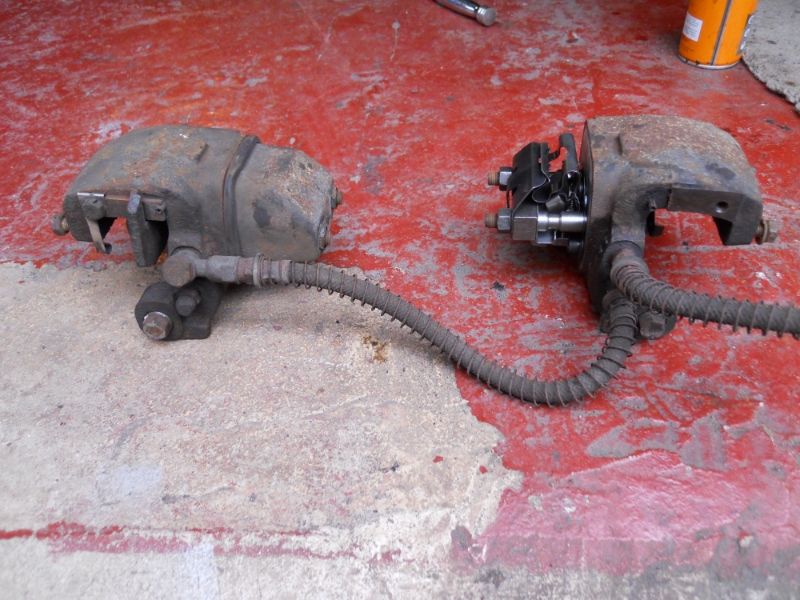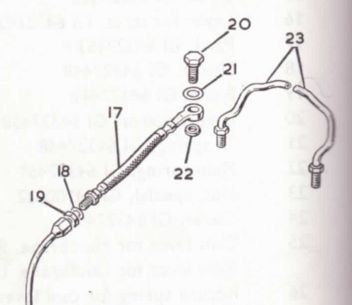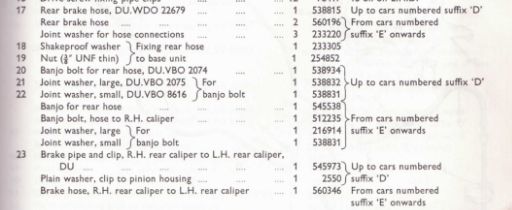You are using an out of date browser. It may not display this or other websites correctly.
You should upgrade or use an alternative browser.
You should upgrade or use an alternative browser.
Flexible hose on rear calipers
- Thread starter testrider
- Start date
Dave3066
Well-Known Member
My '66 parts book certainly shows a pipe connecting rear calipers like that :?
Did they never actually fit it or is Paul's car the only one?
Dave
harveyp6 said:That's not standard on any car.
Did they never actually fit it or is Paul's car the only one?
Dave
^^^I think that little lot is Dunlop, and it's the body to O/S caliper hose that has the banjo on it, not the one between the two. That's the metal pipe IIRC. It may be that hose that's been fitted to the Girling car (being discussed here) between the calipers, but that's not how they should be.
testrider
Active Member
Well this is intriguing.
From the '67 WM you can see the banjo pipe from the caliper to the body on the Dunlop system.
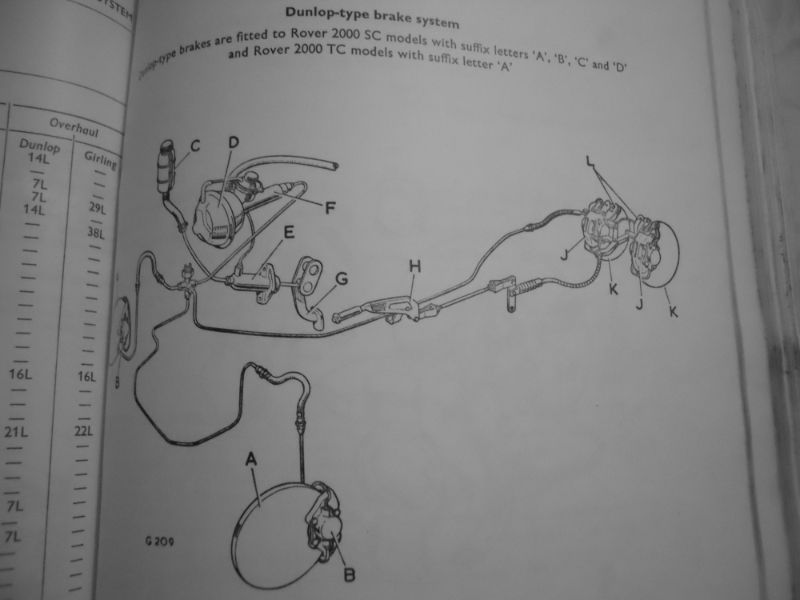
But it's still on the drawing for the Girling system between the calipers.
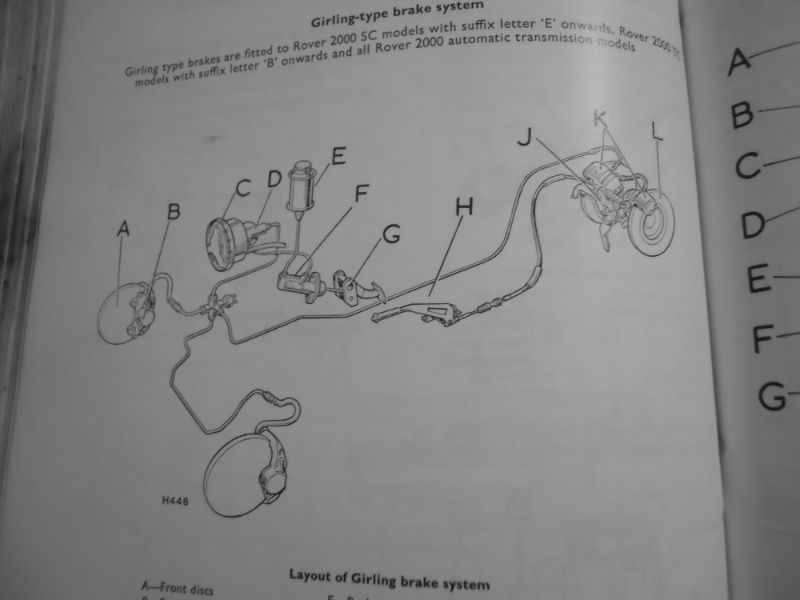
The pipes look past their best so I'll probably fit new later Girling ones with the short rigid pipe
From the '67 WM you can see the banjo pipe from the caliper to the body on the Dunlop system.

But it's still on the drawing for the Girling system between the calipers.

The pipes look past their best so I'll probably fit new later Girling ones with the short rigid pipe
colnerov
Well-Known Member
Hi, I have one of those banjo fittings which I took off a Humber Super Snipe brake master cylinder
when I was up the breakers yard many years ago. I was into modifying cars, so I thought "that might
come in handy" as you do. :wink: So as stated although it may not be standard it could be a suitable
addition. After a bit of research they are fitted to a number of applications usually where space is
restricted.
Colin
when I was up the breakers yard many years ago. I was into modifying cars, so I thought "that might
come in handy" as you do. :wink: So as stated although it may not be standard it could be a suitable
addition. After a bit of research they are fitted to a number of applications usually where space is
restricted.
Colin
Vern Klukas
Active Member
harveyp6 said:That's not standard on any car. But if it's fitted and working without problems then leave it. The way that is would actually make removing the NSR caliper on its own a lot easier.....
Actually, I have seen original 1966-7 NADA cars with a banjo and have a Sept 66 parts catalog that lists the banjo fitting & hose.
Yours
Vern
OK,here is the definitive answer. The banjo arrangement was fitted to "SC & Automatic cars suffix E & TC models Suffix B up to final drive 41090983D". After that, they used the short pipe.
Vern Klukas
Active Member
harveyp6 said:You'd obviously have a greater knowledge of the NADA than I do. I don't count them, or have any dealings with them, so really should preface my remarks alongs the lines of "NADA's don't count".
Thanks for the compliment, I do know the NADA 4cyl cars rather well. This wasn't just a NADA detail, it was all cars.However, it's likely all the TCs and many of of the SC & Automatic cars that had the banjo were exported. It can't of been more than a few thousands cars, if that. If we knew the number scheme for the final drives we could figure the number out, I have a service bulletin that says the first Girling brake final drive was 40152926D, and the last banjo fitted car was final drive 40190983D (Just subtracting the two gives 38,057 which is not a plausible number of units).
Yours
Vern
I've never seen that on any of the thousands of cars I've done over the years, but seeing as they made hundreds of thousands in total, and I tried to avoid the early cars, I suppose that's not really surprising. There's always new bits of info that come to light to all of us.
testrider
Active Member
Vern Klukas said:harveyp6 said:That's not standard on any car. But if it's fitted and working without problems then leave it. The way that is would actually make removing the NSR caliper on its own a lot easier.....
Actually, I have seen original 1966-7 NADA cars with a banjo and have a Sept 66 parts catalog that lists the banjo fitting & hose.
Yours
Vern
OK,here is the definitive answer. The banjo arrangement was fitted to "SC & Automatic cars suffix E & TC models Suffix B up to final drive 41090983D". After that, they used the short pipe.
That would tally with the diagram in the 1967 workshop manual that I have then. Sadly HOT doesn't have it's original diff so I can't check the theory.


